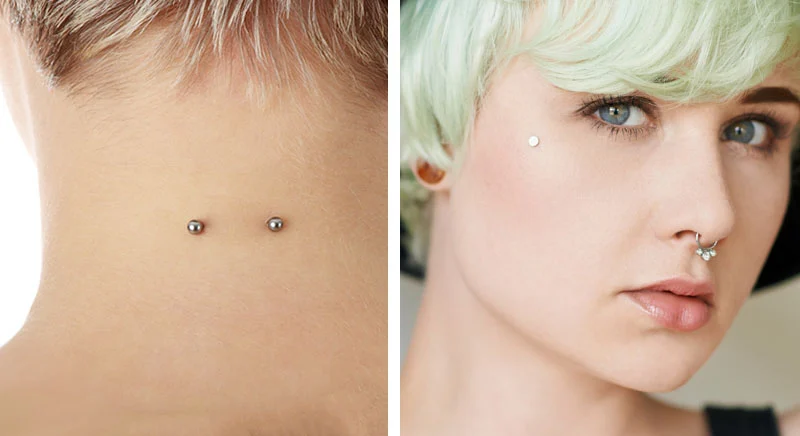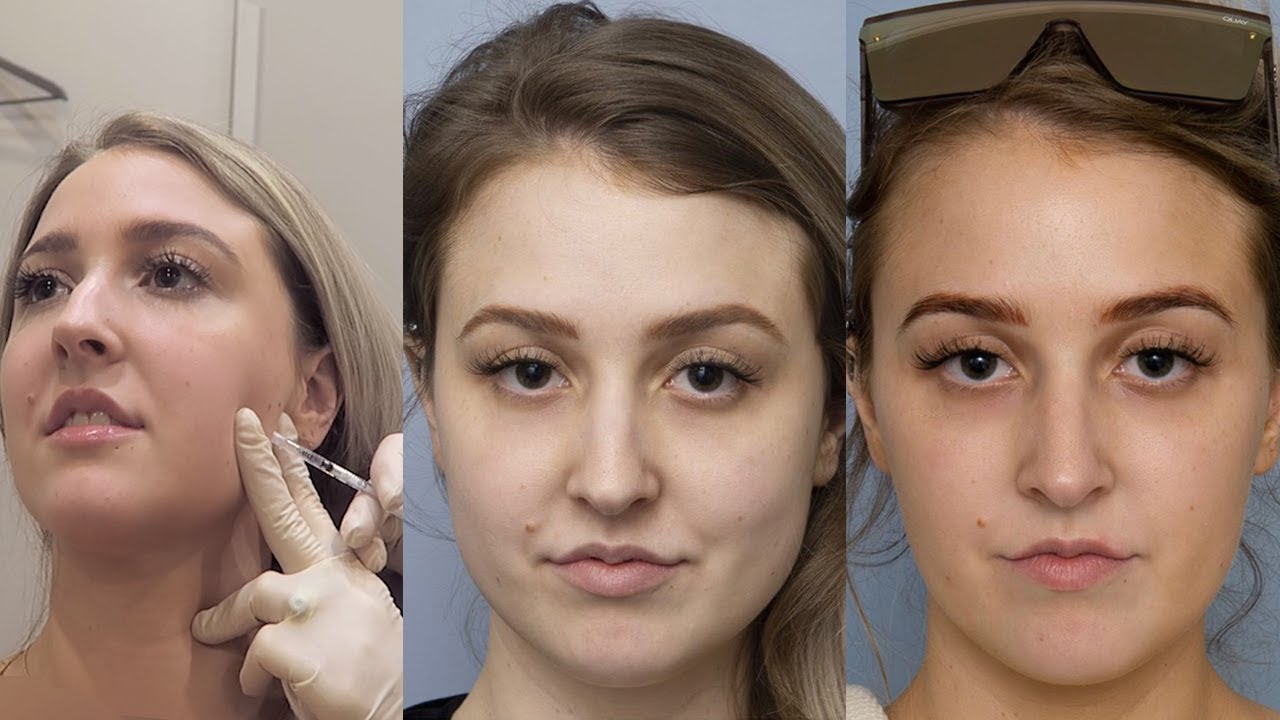Dermals have gained significant popularity in the world of body art and fashion over the years. They are an excellent option for individuals. For seeking a unique piercing that genuinely stands out from the usual ones. It’s essential to understand how dermal piercings function. How to care for them properly, and what to expect during the process. Whether you’re considering getting one or appreciate their appearance.
This in-depth guide will provide you with everything you need to know about dermals. Including the various types of dermal piercings, the procedure involved, post-procedure care, and the associated risks. We’ll also talk about why dermal piercings are so popular in the body modification community.
WHAT ARE DERMALS?
Dermals, also called dermal piercings or single-point piercings, are a way to change your body. By putting a small anchor under your skin. The anchor holds a piece of jewellery above the skin, making it appear like a piercing. Without the need for a hole to go in and out, as with regular piercings.
Unlike regular body piercings, this one puts the jewellery directly under the skin instead of through it. This makes dermal piercings less noticeable while still giving you a bold and eye-catching look. Dermals have become increasingly popular in recent years. Due to their versatility, ease of customisation, and applicability to various parts of the body.
TYPES OF DERMALS: WHERE CAN YOU GET A DERMAL PIERCING?
One of the best things about dermals is that you can put them in a lot of different places on your body. There are endless options for you, whether you want a simple, single dermal or a more complicated design.
Facial Dermals
One of the most common types of piercings is a facial dermal piercing. People often wear these dermals as a fashion statement and apply them to their cheeks, under their eyes, their chin, or the bridge of their nose.
-
Cheek Dermals
Cheek dermals go on the cheeks and often make a “dimple” effect. They are a popular choice for individuals seeking to enhance their facial appearance.
-
Chin Dermals
Chin dermals are put on the chin and can make your jawline and face profile look better. People who prefer a more edgy or bold style often opt for this placement.
-
Nasolabial Dermals
Nasolabial dermals go near the corners of the mouth. They are not too obvious, but they are wonderful and can make your lips look better.
NECK AND NAPE DERMALS
Dermal piercings on the neck and nape are great options for individuals seeking a more subtle or unique look. People who like body modifications that aren’t as obvious or who want a piercing that can be hidden under clothes often get these placements.
-
Nape Dermals
Nape dermals are placed at the back of the neck and give a sleek, classy look. They are great for people who want to add some body art but don’t want it to be too obvious.
DERMALS FOR HANDS AND FINGERS
Typically, hand dermals are applied to the back of the hand or between the fingers. These placements can make your body art collection stand out, but they are also more likely to get damaged because your hands move around a lot.
-
Back of the Hand Dermals
A dermal piercing on the back of the hand can make a strong fashion statement, giving you a chic, edgy look that is still easily visible.
-
Finger Dermals
Finger dermals are put between the fingers and can look very classy. But because the fingers move and rub against each other, they may need more care after the fact.
WHAT TO EXPECT DURING THE DERMAL PIERCING PROCEDURE
Getting a dermal piercing is relatively easy, but it’s best to have a professional perform it to ensure it’s in the correct location and to minimise the risk of complications.
CONSULTATION AND DESIGN
Before you get your dermal piercing, you usually meet with the piercer to talk about where you want it, what kind of jewellery you want, and any worries you might have. The piercer will help you select the best spot for the dermal implant based on your body’s unique features and your desired appearance.
THE PIERCING PROCESS
-
Cleaning and Getting Ready
To minimize the risk of infection, your skin will be thoroughly cleaned and sterilised. The piercer will mark the skin with a dermal anchor placement.
-
Insertion of the Anchor
: The professional will make a small hole under the skin with a small needle or scalpel. This is where the anchor will go. A tool is used to insert the anchor under the skin, and then the jewelry is threaded into place above the skin.
-
Putting the Jewellery in Place
: The jewellery passes through the anchor and is placed in the correct position. This finishes the dermal piercing.
The process typically takes 15 to 30 minutes, but this duration can vary depending on the location and complexity of the piercing. The procedure doesn’t cause too much pain, but you may feel some discomfort when the anchor is inserted under the skin.
DERMAL PIERCING AFTERCARE: HOW TO TAKE CARE OF YOUR DERMALS
To ensure your dermal piercing heals properly and reduces the risk of infection or rejection, it is essential to take proper care of it. Here are some essential things to remember when caring for your new dermal piercings:
CLEAN THE PIERCING OFTEN
For the first few weeks after getting your dermal piercing, clean the area twice a day with a saline solution or a mild, alcohol-free cleaning solution. This keeps bacteria away from the piercing and reduces the risk of infection.
DO NOT TOUCH THE PIERCING
You may want to touch your new piercing, but it’s best to keep your hands away from it to avoid getting dirt and germs on it. Before cleaning the piercing, always wash your hands thoroughly.
DON’T TAKE OFF THE JEWELRY TOO SOON
If you remove the jewellery too soon, the piercing could close over the anchor, potentially leading to an infection. Before making any changes, let the piercing heal completely.
Do not swim
For the first few weeks, avoid exposure to pools, hot tubs, and lakes, as they can introduce bacteria to the piercing and slow down the healing process.
WATCH FOR SIGNS OF INFECTION
If you see signs of infection, like more redness, swelling, pain, or pus, you should see a professional piercer or doctor right away. It’s essential to address problems promptly to prevent further issues.
RISKS AND PROBLEMS WITH DERMAL PIERCINGS
Dermal piercings are usually safe when done by a professional, but there are some risks and problems to be aware of:
INFECTION
There is always a risk of infection when you undergo any bodily change. Cleaning the area and following the aftercare instructions reduces the risk. But if an infection does occur, it must be treated promptly to prevent it from spreading.
REJECTION
Dermal piercings are more likely to be rejected than regular piercings. Because the body may see the anchor as something that doesn’t belong there. If the dermal starts to reject, it will slowly push itself out of the skin, and the piercing will be lost.
If the dermal piercing is removed or rejected, it may leave a small scar or mark on the skin. To avoid scarring, ensure that you take proper care of your piercings and consult a professional piercer if you experience any issues.
When to think about getting a dermal piercing
There are many reasons why someone might want to get a dermal piercing. Here are some times when a dermal piercing might be a good idea:
-
Style and Fashion
Dermal piercings are a great way to add something unique and stylish to your look. You can choose different jewellery designs and placements that suit your style, making them customizable.
-
Body Modification Enthusiasts
: For people who love body modifications, dermal piercings are a fun way to add to their collection of piercings and tattoos.
-
Minimal Intrusion
If you want a piercing but dislike the visible holes left by traditional piercings, dermal piercings offer a more subtle yet bold option, providing a minimalist look.
CONCLUSION: IS A DERMAL PIERCING RIGHT FOR YOU?
Body art, such as dermal piercings, is a fun and unique way to enhance your appearance. Dermals are a great way to express your personality, whether you like how they look or prefer a more subtle alternative to regular piercings.
Dermal piercings can last for many years if you take proper care of them and maintain them properly. They can make you look good and feel good. It’s essential to select a professional piercer, follow the aftercare instructions carefully, and be aware of any potential risks to ensure a positive experience that lasts.





